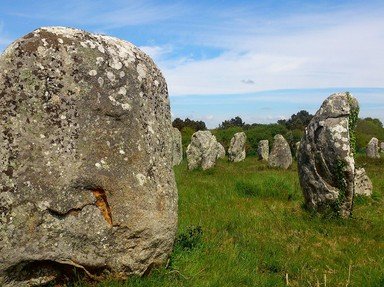Quiz Answer Key and Fun Facts
1. Many historians believe that the first Americans migrated from Asia via a natural land formation towards the end of the last Ice Age. What is this area named?
2. In which Canadian province or territory would you find the Bluefish Caves, where some prehistoric artifacts have been unearthed?
3. Some of the oldest prehistoric artifacts found in the United States were unearthed at the Paisley Caves in Oregon. How old are these remains estimated to be?
4. In 1989, the skeleton of a prehistoric woman was discovered near a town in the state of Idaho. What was she named?
5. The remains of a prehistoric man were discovered in the state of Washington in the 1990s. What was he named?
6. In northwest Oklahoma, researchers discovered evidence of prehistoric humans as well as the remains of an extinct species of which animal, presumed to have been hunted by these humans?
7. Artifacts from the Pleistocene era were discovered near which city in the state of New Mexico? The city also lends its name to a specific type of arrowhead discovered at this location.
8. Which of the following is the name of an archeological site located in the South American nation of Colombia?
9. In which nation would you find the Monte Verde archeological site? This site may potentially contain some of the oldest early human artifacts in South America.
10. Skeletal remains of a prehistoric woman were found in the South American nation of Brazil. What name was she given?
Source: Author
RedHook13
This quiz was reviewed by FunTrivia editor
gtho4 before going online.
Any errors found in FunTrivia content are routinely corrected through our feedback system.
